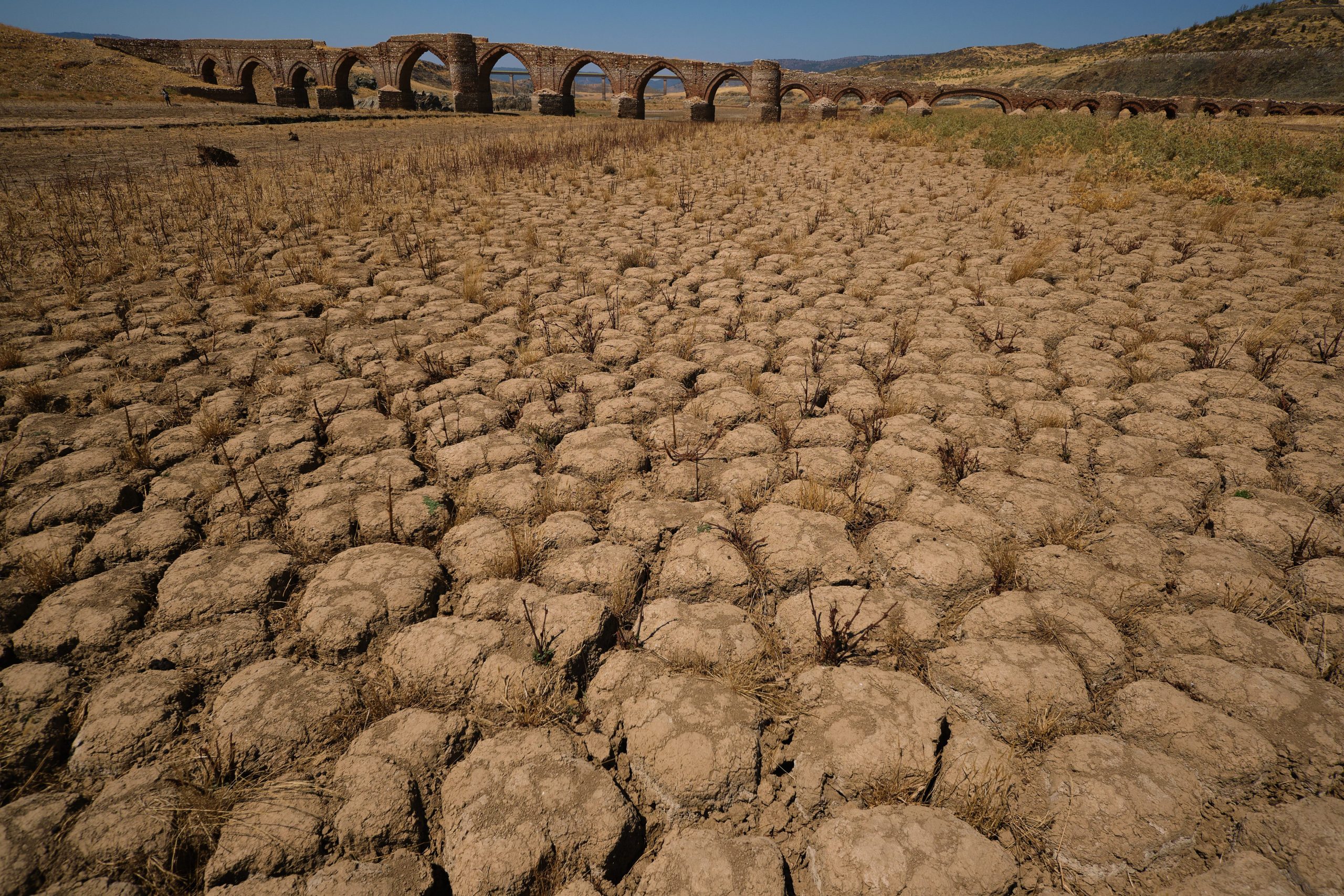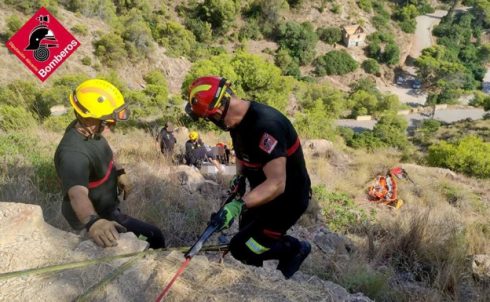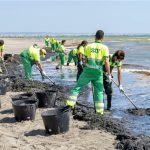ACROSS Spain archaeological treasures are emerging from the deep as a prolonged drought causes reservoir levels to drop to their lowest in decades.
The severe drought parching Spain this summer is proving disastrous for farmers and has forced water restrictions on urban areas, but for those who enjoy seeking out historical sites there is a surprising silver lining.
From a Roman fort in Galicia to the Stonehenge of Extremadura and a medieval church in Catalunya, the Olive Press takes a closer look at long lost treasures exposed by receding waters.
In Extremadura, a flock of sheep find shade from the sizzling glare of the midday sun beneath the arches of a medieval bridge, a 14th century structure lost to a watery fate when the valley was flooded in 1956 to create the Cijara reservoir.
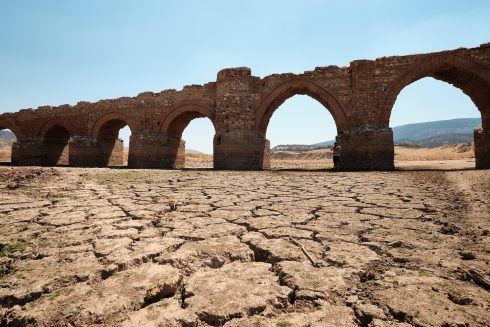
Yet now its 16 mudejar arches stretch across a parched dust bowl having re-emerged after one of the driest summers ever.
Its buttresses rise from the cracked earth supporting a 225 metres pathway that crosses from nowhere to nothing, over little more than a few murky puddles after the reservoir lost some 90% of its water.
The story is repeated across the Iberian peninsula where climate change has left reservoirs at their driest in 1,200 years, and winter rains are expected to diminish further, a study published last month by the Nature Geoscience journal showed.
Just outside the sleepy town of Peralêda de la Mata, a clutch of megalithic stones now rise up on a muddy shelf laid bare by the receding water; an archaeological site dubbed the “Stonehenge of Spain”.
Dating back 5,000 years, the circle of granite menhirs are all that remains of a sun temple built by Bronze Age man on the banks of the Tagus River in Cácares province.
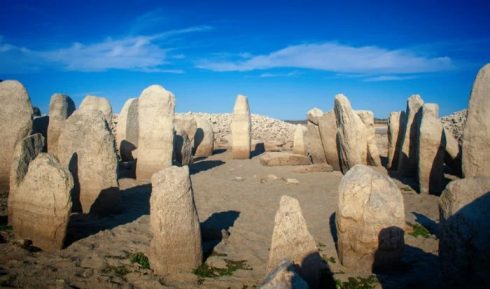
Valued as a site of interest by the Romans, the stones had been ignored until the 1920s, when a visiting German priest with a keen interest in amateur archaeology made detailed sketches and sent the most moveable material back to a museum in his home city of Munich.
So undervalued were the stones, many of which had fallen from their upright position to lie forlornly in the mud, that in 1963, officials in the Franco regime thought little of flooding the area to create a vast water reserve.
The all but forgotten site made headlines during the exceptionally long hot summer of 2019 when the megalithic stone circle emerged for the first time since the valley was flooded. After garnering international press attention, Spain took steps to issue cultural protection status which was granted only after the menhirs had once again disappeared when the reservoir filled with the autumn rains.
Now again they appear in what, with global warming, could become an annual occurrence.
A prolonged dry spell and extreme heat made July the hottest month in Spain since at least 1961 and August may well follow into the record books.
Spanish reservoirs are at just 40% of capacity on average in early August, well below the ten-year average of around 60%, official data shows.
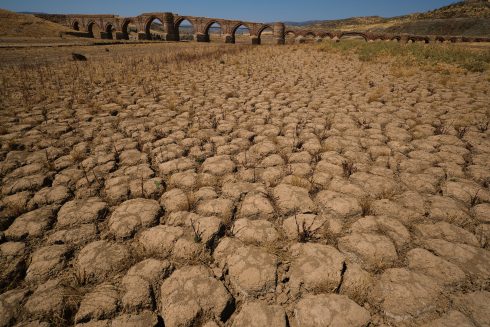
“We are in a particularly dry year, a very difficult year that confirms what climate change scenarios have been highlighting,” Energy Minister Teresa Ribera confirmed earlier this month.
At the Buendia reservoir, just east of Madrid in Guadalajara, the ruins of spa town made popular for its restorative waters during the reign of Isabella II in the early 19th century have reappeared, caked in dried mud.
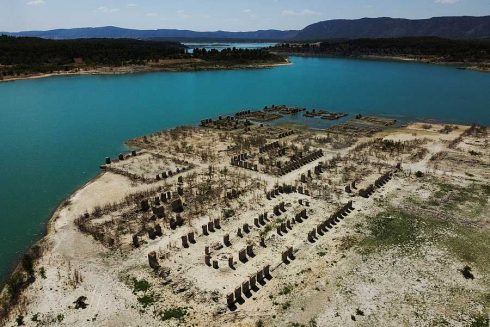
For half a century, the once elegant resort on the banks of the Tagus served as a getaway for Madrid’s wealthy bourgeois, until it fell into neglect once trips to the beach became more popular. It too suffered a watery fate under the Franco regime’s rampant reservoir scheme.
Hundreds of villages across Spain were sent to a watery grave and their residents forcibily evicted during Franco’s mass construction of a network of reservoirs.
The projects brought not only the loss of towns, villages and sites of historical interests but also human tragedy with several disasters resulting in mass deaths, events which were covered up by the totalitarian regime.
A reminder of such acts of destruction in the name of progress emerged earlier this month at a dam just north of Barcelona.
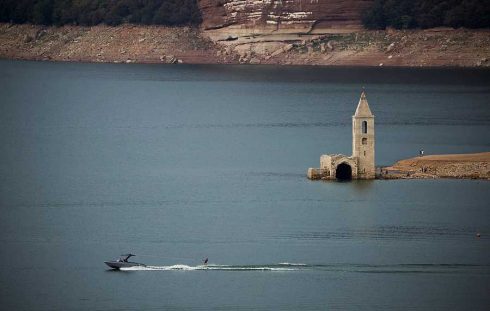
Little by little, the bell tower of a ninth-century Romanesque church appeared from the receeding waters revealing the fully entact building that was once at the heart of the community of Sant Romà de Sau before it was flooded in the 1960s.
But nowhere has the reveal been quite so impressive as at a reservoir in Ourense province in Galicia.
Here, the archaeological remains of a vast Roman camp can now be viewed in their entirety. Known as Aquis Querquennis, the vast site once served as a fort and military barracks for Roman legions during the building of the Via Nova road until it was abandoned around 120 AD.
For nearly two millennia the once important military outpost lay forgotten until the 1920s when local archaeologist Florentino López Cuevillas rediscovered the site and excavations began.
But in 1949 the valley near Os Baños in Ourense province was earmarked as one of the first sites in the reservoir project and the area was flooded to form the As Conchas Reservoir.
As a result only parts of the site, which measures 2,5 hectares in total, are usually visible depending on the water level at different times of year.
READ ALSO:
- One of Europe’s biggest megalithic sites discovered in southern Spain while planting avocados
- IN PICS: Drought reveals full extent of Roman camp as reservoir waters recede in Galicia, northwestern Spain
- Spain’s winemakers battle to save harvest as heatwaves and drought takes toll

